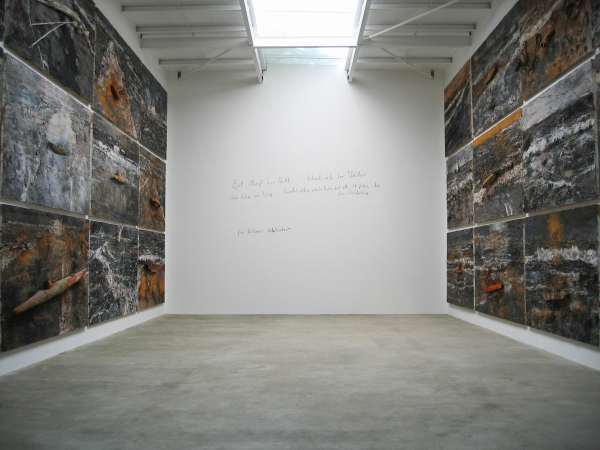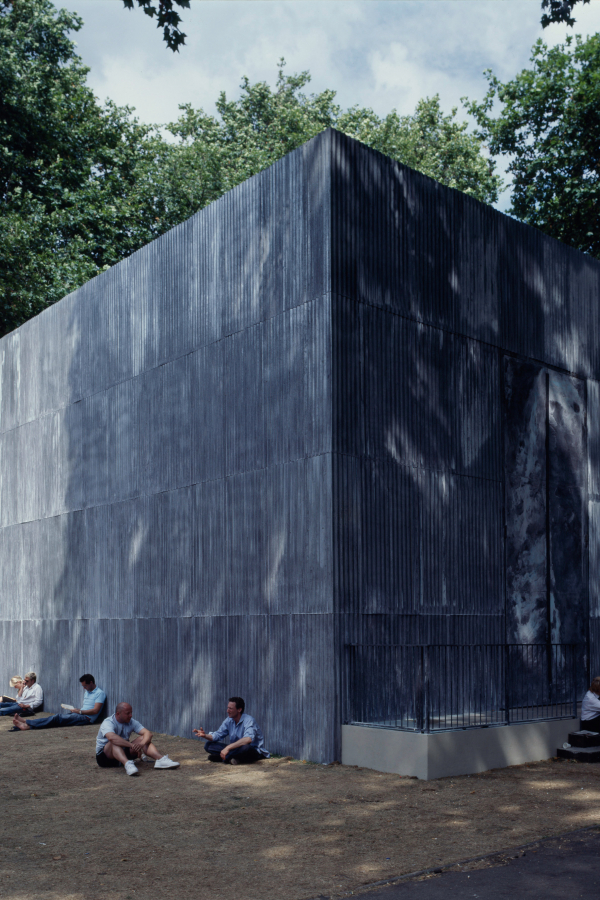
Kiefer Pavilion
Kiefer Pavilion
Temporary exhibition space
The centrepiece of Anselm Kiefer’s first show at White Cube in 2005 was a large pavilion erected in the middle of Hoxton Square. Designed specifically to house a series of 30 paintings based on the life and works of the Russian Futurist poet Velimir Khlebnikov, the exterior of the pavilion was clad in sheets of galvanised corrugated iron, weathered and aged in response to the strong materiality of the paintings themselves.
Oversize doors of roughly welded steel provided access to the space which was top lit by means of a full-length skylight.
The shape of the tall doors, the play of daylight from the high-level windows and the constrained nature of the pavilion itself were all directly influenced by the ancient temple architecture in Egypt that has provided inspiration for so many buildings and mausoleums designed for peaceful contemplation. There is something uniquely calming about being within a tall, enclosed space that generates a very special energy, and this energy contributed to the power of the works on show.
The pavilion was sold together with the paintings and has now been re-erected in Connecticut, USA. Several versions of the pavilion were subsequently manufactured and used in the Grand Palais for Kiefer’s major exhibition in 2007.
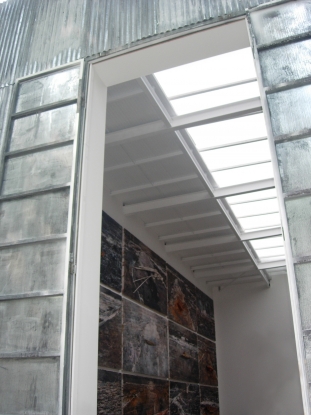
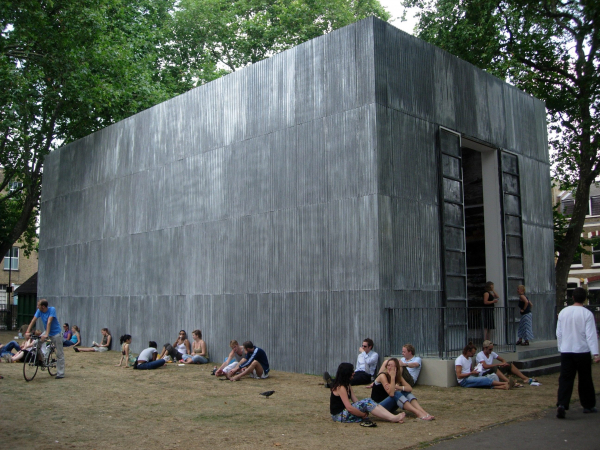
Oversize doors of roughly welded steel provided access to the space which was top lit by means of a full-length skylight.
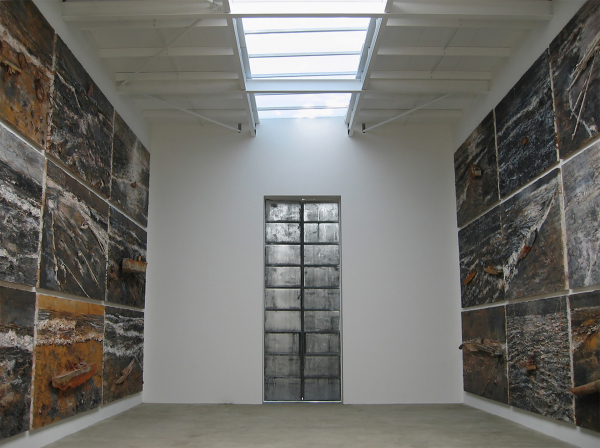
tall doors, the play of daylight from the high-level windows and the constrained nature of the pavilion itself were directly influenced by the ancient temple architecture in Egypt designed for peaceful contemplation
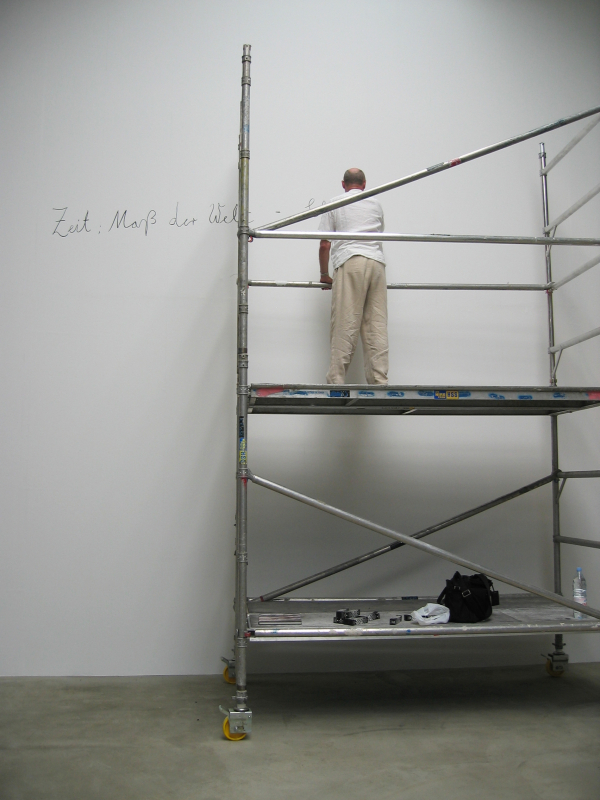
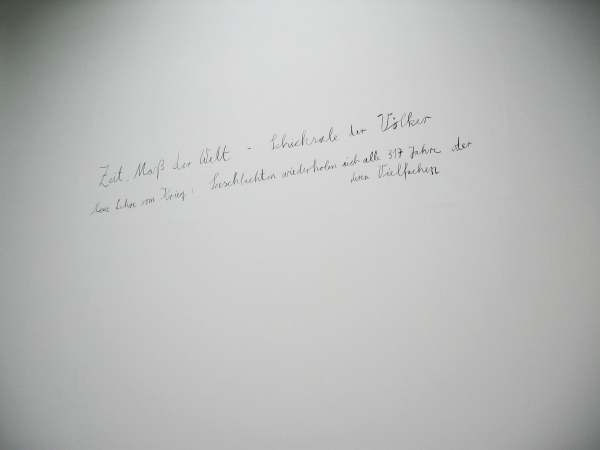
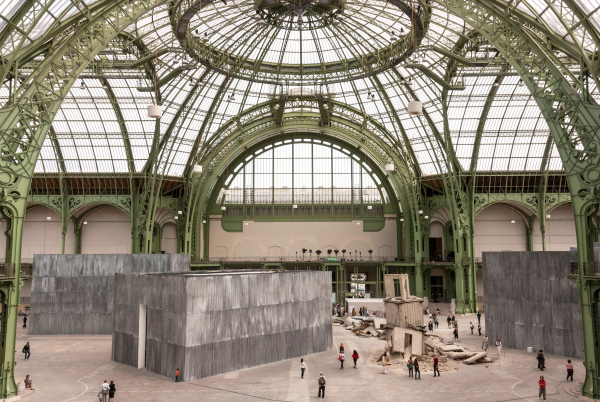
Several versions of the pavilion were subsequently manufactured and used in the Grand Palais for Kiefer’s major exhibition in 2007.
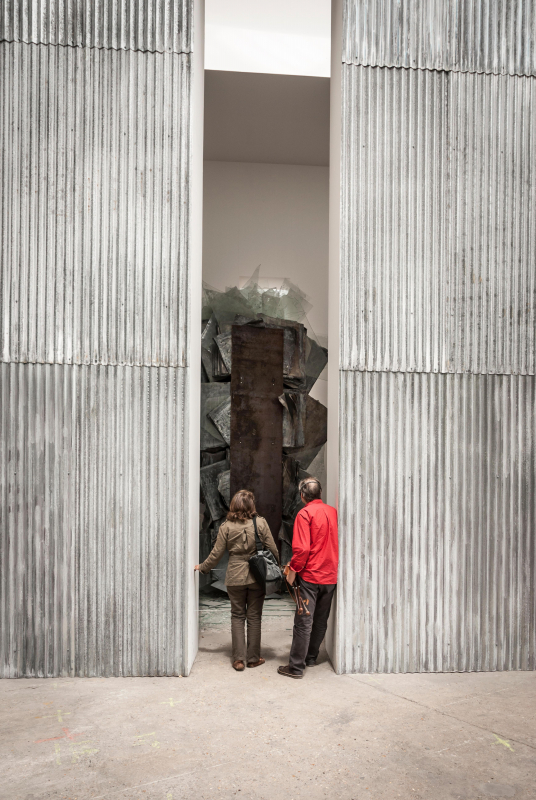
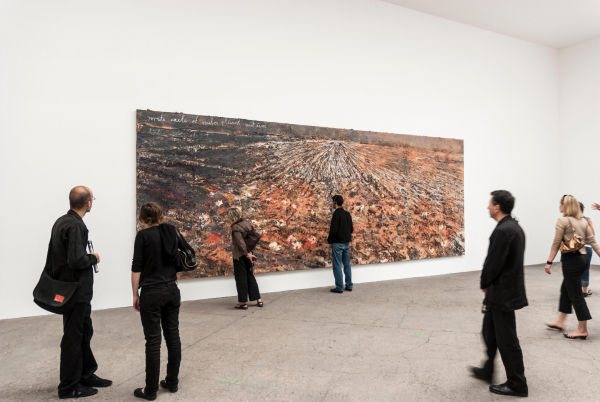
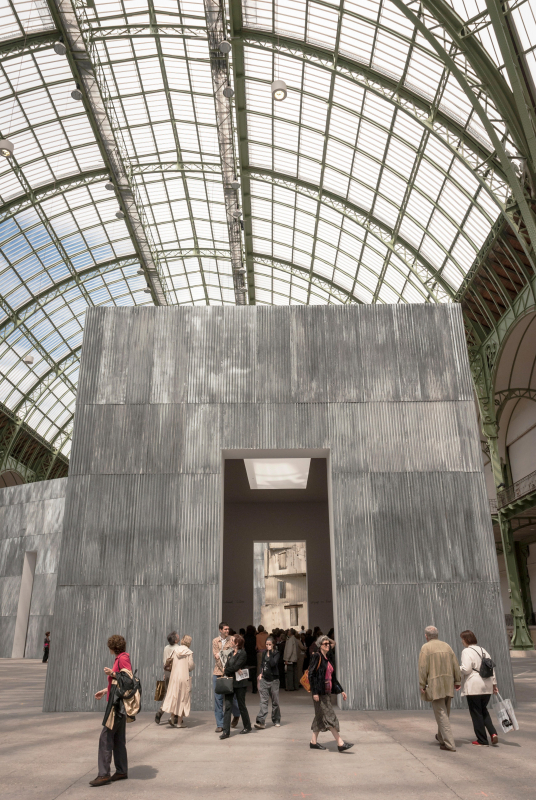
The pavilion was sold together with the paintings and has now been re-erected in Connecticut, USA.
